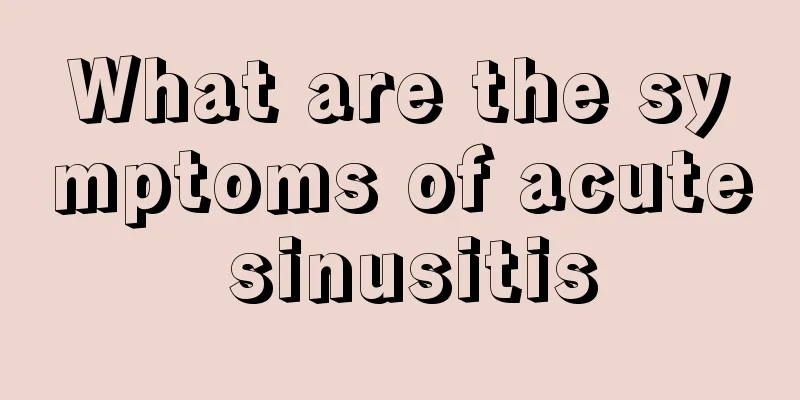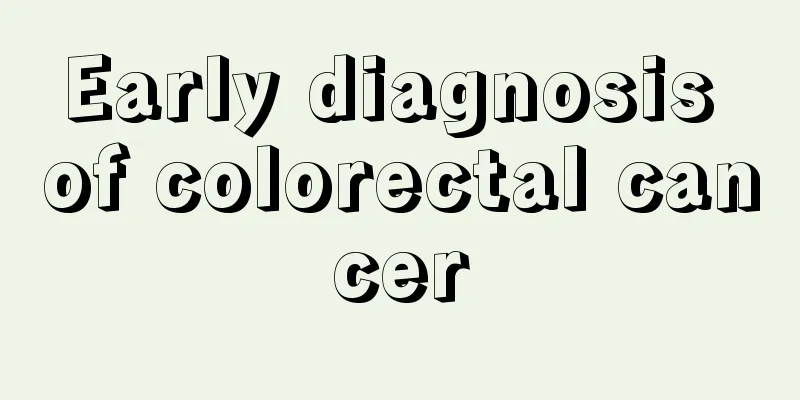What are the symptoms of acute sinusitis

|
Sinusitis is a common clinical disease, which is mainly divided into acute sinusitis and chronic sinusitis. Clinically, the symptoms of acute sinusitis are more obvious than those of chronic sinusitis, so attention should be paid to treatment. If acute sinusitis is not treated in time, it can easily develop into chronic sinusitis. When treating acute sinusitis, the key is to use the right medicine for the right condition. What are the symptoms of acute sinusitis? 1. Systemic symptoms There may be symptoms such as chills and fever, loss of appetite, general discomfort, and mental depression. If the disease occurs in children, the above symptoms are more severe and are accompanied by respiratory and digestive tract symptoms such as coughing, vomiting, and diarrhea. 2. Nasal congestion Due to congestion, swelling and accumulation of secretions in the nasal cavity, the nasal membranes become congested, causing alternating or persistent nasal congestion in both nostrils, often accompanied by an obstructive nasal sound. 3. Pus Cat-purulent or purulent nasal discharge, the amount is large and difficult to be completely discharged. Patients with odontogenic maxillary sinusitis have foul-smelling nasal discharge. 4. Olfactory impairment Temporary hyposmia or loss of smell may occur, and odontogenic maxillary sinusitis may also cause a subjective sense of malodor. 5. Local pain or headache The most common pain symptoms of acute sinusitis may be neuralgia, localized or diffuse headache. Usually, the pain of the anterior group of sinusitis is mostly located in the head, forehead or maxillofacial area, while the pain of the posterior group of sinusitis is mostly located deep in the head, base of the skull or occipital area, and is aggravated by coughing or lowering the head. 6. Acute frontal sinusitis It starts with a general headache or supraorbital neuralgia, which is later localized to the forehead. It is characterized by a headache after waking up in the morning, which gradually worsens, is most severe at noon, gradually eases in the afternoon, and disappears at night. 7. The mechanism of sinusitis causing periodic headaches is as follows After getting up in the morning, the patient's head is in an upright position, so that the purulent secretions accumulated in the sinus gather at the bottom of the sinus and are slowly discharged through the sinus opening. In this process, negative pressure or vacuum is formed in the sinus, which can produce a "vacuum headache". Coupled with the stimulation of purulent secretions, the headache is more severe in the morning. In the afternoon, the pus gradually empties, the negative pressure in the room disappears, and the headache is relieved. |
<<: Ichthyosis has several manifestations
>>: What are the causes of chronic skin allergies
Recommend
What to do if a tooth crack hurts?
When you have painful tooth cracks, you must unde...
Patients with cardia cancer often experience bleeding symptoms
Cardiac cancer is a very harmful disease and can ...
What are the postoperative health care measures for bladder cancer
The prognosis and survival rate of bladder cancer...
What are the symptoms of orbital inflammatory pseudotumor
Orbital inflammatory pseudotumor is actually a mu...
Can a man with liver cancer have children?
Liver cancer is the terminal stage of liver disea...
How to use Baibu Chinese medicine to remove lice
Having lice on the head is very troublesome. The ...
What happens if the interstitial infiltration of breast cancer is less than 5%? What should I do?
Breast cancer interstitial invasion generally ref...
4 key points to prevent uterine cancer
Uterine cancer is a malignant tumor with a high i...
How much does it cost to cure a pituitary tumor?
People nowadays don’t know why their lives are be...
Bad living habits can lead to breast cancer
Breast cancer is one of the more common malignant...
What is the impact of early pregnancy on rectal cancer
Every woman wants to be a mother. And these are a...
What are the common symptoms of liver cancer patients? Liver cancer may also present these symptoms
Due to social development, economic improvement a...
Drinking protein powder will make you fart
Protein powder can effectively increase the muscl...
Long-term smoking can increase the incidence of laryngeal cancer
Smoking and laryngeal cancer are closely related....
What's causing the pain on the right side of your chest? Be careful of these diseases
Do you take chest pain seriously in your life? So...









